www.industry-asia-pacific.com
27
'21
Written on Modified on
Thermal imaging to break the chain of infection
The corona pandemic has clearly demonstrated to the whole world just what a highly contagious virus can do. Tourists and travellers have unintentionally contributed to the spread of the disease. Detecting infected persons on arrival at airports is key in breaking a potential chain of infection. Here, thermal imaging cameras can make a decisive contribution. Motors from FAULHABER help these cameras capture precise images and measurement values in a fraction of a second.
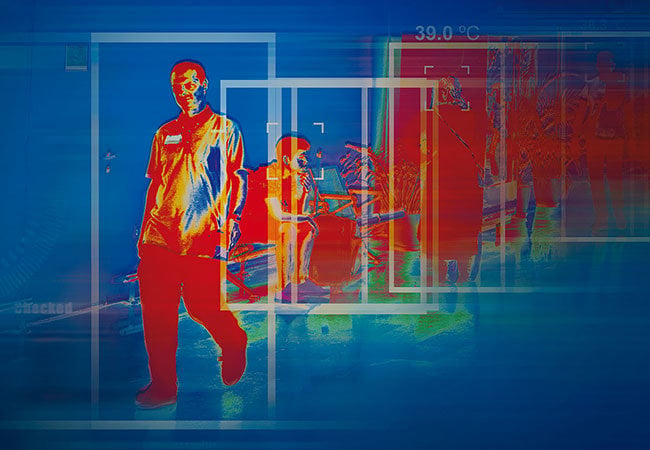
The idea of mass temperature monitoring is nothing new. Its introduction and increased use was prompted by the localised epidemics caused by the SARS, MERS and Ebola viruses. In view of the acute health risks that these viruses pose, some countries already began using thermal scans at airports and other points of arrival a number of years ago in order to at least hinder the spread of the diseases. As a result of COVID-19, this method is now increasingly being used all over the world.
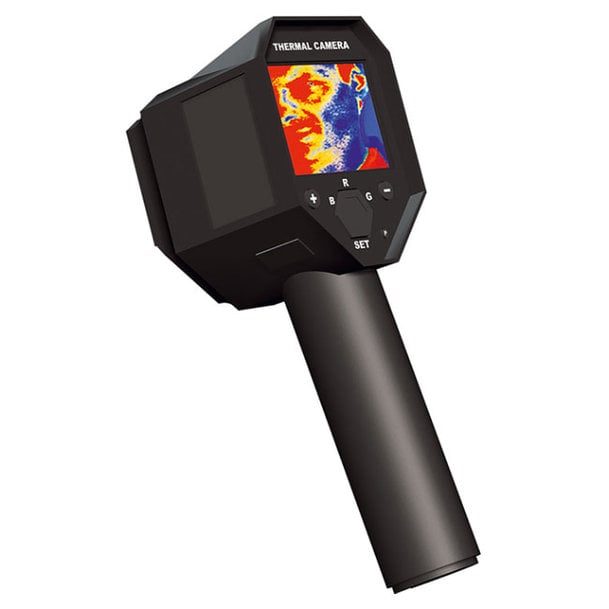
Fever is usually a symptom of an infectious disease. Even if the increased temperature is not necessarily caused by the coronavirus, it is an indication that closer examination is required. If a traveller is found to have a high temperature, targeted tests can then be carried out and further immediate measures taken.
Fast and contact-free
A major advantage of temperature measurement using thermal imaging cameras is its suitability for mass monitoring. The procedure is contact-free, takes just a few seconds and can be automated. This means it can be used at airports, at border controls or in other "sluice" situations without freedom of movement being significantly restricted or large numbers of people having to undergo cumbersome procedures. For example, South Korea also adopted the method during the parliamentary election on 15th April 2020: The body temperature of every voter was measured before they entered the polling station. This could be the reason why the country has managed to control the coronavirus particularly well compared to the rest of the world.
The inner corner of the eyelid is the most suitable spot on a person's face for fast and relatively reliable temperature measurement. Unlike the forehead, for example, which can cool down significantly as a result of perspiration, the temperature at the corner of the eye is extremely constant. It can be determined using the infrared radiation emitted by the body's surface. Most thermal imaging cameras capture this radiation in a similar way to normal digital cameras using an image sensor with up to one million pixels.
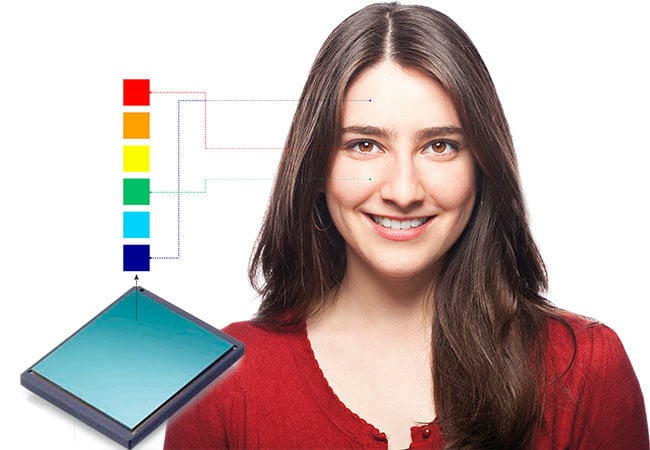
Each pixel is a tiny bolometer, a thermal receiver measuring a few square micrometres. It takes less than 10 milliseconds for the thermal radiation to heat the bolometer, which is just 150 nanometres thin, by approximately one fifth of the temperature difference between the object temperature and the bolometer's own temperature. The sum of these values is used to calculate the temperature profile on the captured surface. Represented visually, this produces a thermal image with the familiar colour shading – the brighter the colour, the higher the temperature.
Thermal pixels and quantum well
Apart from the bolometer, there are other methods of measuring temperature contact-free and "optically". For example, certain sensor types detect the wavelength of the radiation and use it to determine the temperature. Bolometers and wavelength detection are not only used for clinical temperature measurement in humans. Another familiar application is searching for temperature leaks in the insulation of buildings. The coloured thermal image immediately indicates where heat – or cold in the case of air-conditioned buildings – is being lost.
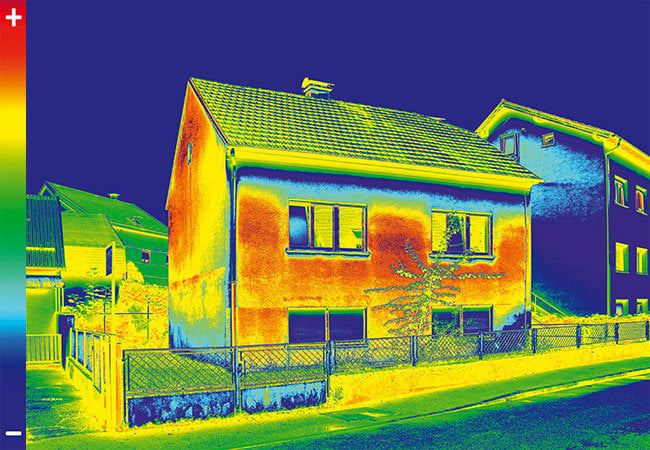
A less well known but widespread application for thermography is quality control. Whether metal, plastic or glass – a precisely set temperature during thermal processing steps is often a decisive factor in the quality of a product. This is why processes such as hot-rolling, lamination or glass hardening are frequently monitored using thermal imaging cameras. In the case of solar cells, thermography reveals structural damage by detecting energy-inefficient "hot spots". Thermography also plays a key role in safety technology. A thermal scan can, for example, make overheated components visible long before they reach a critical condition.
In atmospheric and space research, a completely different method is used: the quantum well infrared photodetector (QWIP). It consists of alternate layers of extremely thin semiconductor material and utilises a quantum effect. The layers limit the quantum-mechanical states that a particle can assume there. Incoming infrared waves influence the state and from this it is possible to obtain meaningful images. These images are characterised by extremely high-resolution "colours".
There are also devices that do not use the available thermal radiation, but instead make use of active illumination. An infrared light source illuminates the observed scene in the same way as a standard photographic lamp – the thermal imaging camera becomes a night-vision device. This method is used in, for example, anti-terror operations in dark rooms. The infrared light remains invisible to the targeted individuals.
Optics in motorised motion
No matter which method is used, electromagnetic waves must always be "collected", bundled and guided for measurement and imaging. This is essentially done in the same way as for conventional photography in visible light. The same optical elements are used: Lenses are moved for focusing and zooming; apertures are adjusted, filters brought into position and shutters operated. In the case of the widely used bolometer, the thermal pixels must additionally be recalibrated at short intervals so that points with the same temperature have the same brightness in the image. For this purpose, most devices have a black shutter which is automatically moved in front of the sensor in order to calibrate all pixels to the same value. The quicker the shutter moves, the shorter the time during which measurement cannot performed.
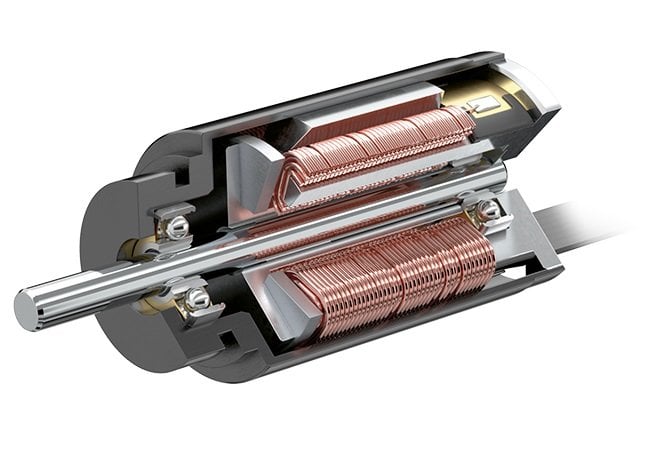
To enable focusing and zooming, optical devices are often equipped with precious-metal commutated DC-micromotors of the 1524 ... SR series. They achieve extremely high performance values with minimal space requirements. Motors measuring 8-10mm in diameter are used in cases where drives need to fit inside minute microlenses. For example, stepper motors of type ADM0620 in combination with an integrated lead screw are ideal for moving filters and shutters. FAULHABER also offers an extensive range of motors as well as matching gearheads, encoders and other accessories. They provide the optimum solution for almost every application. The drive components can be found in many conventional optical devices where they have been successfully tried and tested for many years. This also applies to the automatic, motorised alignment of the cameras on pan-tilt mounts. The FAULHABER compact and low-vibration stepper motors in particular are predestined for such applications.

